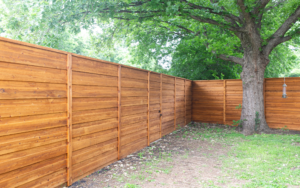Pests are more than just an annoyance: they can spread disease, destroy plants and damage your property. This is why pest control is so important.
Pest control methods can range from physical barriers to pesticides. These include removing food, water and shelter; sealing cracks; cleaning up trash; and fixing leaky pipes. Contact Pest Control Nampa now!

A pest infestation is an unsightly problem that can quickly lead to costly damage. While it’s often impossible to see pests themselves, there are a number of warning signs that you should be on the lookout for, including strange droppings, strange odours and unexplained damage.
Unexplained droppings and urine stains are one of the first signs of pest infestation. Droppings from rodents tend to have a pellet-like appearance, while those of insects like cockroaches can be more obvious due to their size and oily texture. In general, pest droppings will be easy to spot in dark areas or in the corners of rooms where they are most active.
Other clear signs of pest activity include gnaw marks on furniture, wires and walls. Rodents need to gnaw in order to control the growth of their teeth, so if you notice gnaw marks on your food packaging, furniture or wall insulation, it’s likely that rats or mice are living nearby.
Cockroaches also produce an unpleasant odour, as do bed bugs. Both of these odours are an indication that pests are infesting your property, especially when they’re in high numbers. If you notice these unpleasant odours in your home, it’s important to act immediately before the infestation gets worse.
A dead insect or bug on the windowsill is another surefire sign that there are pests living in your home or workplace. This is particularly true if the dead insect is of the same species as the ones you’re seeing in your home or workspace.
Finally, if you notice a large number of dead insects around the home or office, this is a warning sign that an infestation is underway and should be addressed as soon as possible.
Pests are attracted to warm, secluded spaces where they can build nests and find food. If you’re noticing a lot of droppings and unexplained damage in your home or office, it’s time to call for pest control services.
Nests and Hives
If you’re noticing a lot of spider webs, egg cases, wasp nests, or mud dauber nests around your property, then you may have an infestation of insects. Pest control experts can help remove these pests and keep them from infiltrating your home or yard. They can also spray your property with preventative insecticides to stop the insects from coming back during the warmer seasons.
If you see hives around your property, it could be the sign of an unwanted honeybee or bumble bee colony. Honey bees usually choose sheltered locations for their hives, such as tree hollows, wall voids, or manufactured structures. Bumble bees often repurpose abandoned rodent burrows in the ground or make use of hollow spaces beneath brush piles. While both of these species are beneficial pollinators, they can be aggressive if threatened or their hives are compromised.
Honey bees are less likely to sting people than other bees, but when they do it’s usually because someone interfered with their hive or a portion of it. In most cases, removing a beehive yourself is not recommended because it can be dangerous and requires extensive protective gear. Instead, call a professional pest control service to safely remove the hive and treat your property with preventative pesticides.
A hive inspection should also be conducted for signs of Small Hive Beetle (SHB) activity. If you notice that the combs are becoming “wormy” or have a slimy appearance, then SHB eggs have likely begun to hatch. If you’re worried that SHB have infested your hive, mix GardStar (40 % EC) into water and drench the surface of the hive body (and underneath if using screen bottom boards). Thoroughly drench an area 18-24 inches in front of and beneath the hive to ensure that wandering beetle larvae will come into contact with the treated soil.
Similarly, if you spot termites, carpenter ants, cockroaches, or fleas, it’s best to get in touch with a pest control specialist right away. These professionals are knowledgeable about the habits of these insects and can effectively deal with them before they spread.
Damage to Your Furniture or Fabrics
It’s not unusual for a pest infestation to cause damage to furniture or fabric items. This can be caused by either the pests themselves or by the chemicals used to eliminate them. If you notice any unexplained damage, it’s important to contact a pest control professional as soon as possible. Untreated, the problem will only get worse and may result in further damage to your home or business.
Some pests, such as wood-destroying organisms and termites, can also damage structures inside your home or building. Often, the signs of these types of pests are less obvious and can be difficult to detect, but you should always check for any unexplained damage. Taking matters into your own hands and trying to remove pests yourself, such as using chemical sprays or traps, can be dangerous for you and your family members. It’s best to let a trained Truly Nolen pest control expert handle the removal and extermination of these types of pests.
If you have an infestation of fabric pests, such as moths or carpet beetles, you can minimize the risk by properly storing and cleaning your clothes and other fabrics. You can also use preventative products, such as moth balls and cedar products. Regularly vacuum and clean rugs, carpets and upholstered furniture to keep them free of lint, hair and other debris that can attract these insects.
Lastly, you should carefully inspect any clothing or other fabric items that have been purchased second-hand. You should never bring these items into your home unless you have laundered or dry-cleaned them first. Clothes moths and carpet beetles feed on natural fibers, such as wool, fur, silk and feathers, and can cause expensive damage to rugs, clothing, blankets and other fabrics.
When choosing a pest control company, be sure to select one that offers an in-home inspection and assessment. The representative who visits you should be able to answer any questions you may have and can show you examples of pest damage or infestation. They should also explain their service process, including the type of treatment that will be used.
Unusual Wear and Tear
Seeing a cockroach or mouse running around inside one’s home can be distressing enough, but it gets even worse when these pests carry diseases and cause damage to property. The gnawing of wires, chewing on furniture or fabrics and other forms of unexplained wear and tear are all clear indications that you have a pest infestation.
If a pest problem goes unchecked, it can lead to significant legal issues. Tenants can take steps to protect their rights and ensure that the pests are properly controlled by contacting local health or building inspectors. They can also ask to have repairs done and deduct the cost from their rent or even break the lease altogether if the property becomes unsafe or uninhabitable due to pests.
Preventing pests starts with making sure that all possible entry points are tightly sealed. This includes preventing water leaks, fixing cracks and keeping trash bins clean and closed. In addition, landscaping should be regularly maintained to prevent easy access for pests. This can include trimming branches and shrubs that touch buildings, using plants that repel pests, and draining water away from the building to avoid standing water.
Next, it is necessary to remove food, water and shelter sources that attract pests. This can be accomplished by cleaning up debris, sealing cracks and reducing the available moisture in areas where pests thrive, such as attics and basements. Additionally, items in closets and storage spaces should be kept clean to minimize hiding spots.
Finally, pests can be controlled through various methods, including exclusion, quarantine, repulsion, physical removal and chemical control. A combination of these control techniques is often the best approach.
Lastly, pest control professionals need to be appropriately trained and licensed to use all appropriate pesticides. It is important to note that pesticides should be used in a safe manner and only when other options are not possible. For example, foggers and bombs are not effective pesticides and should be avoided. Instead, a pest control company should use a variety of non-chemical tactics to first tackle the problem and only turn to chemicals when needed.








